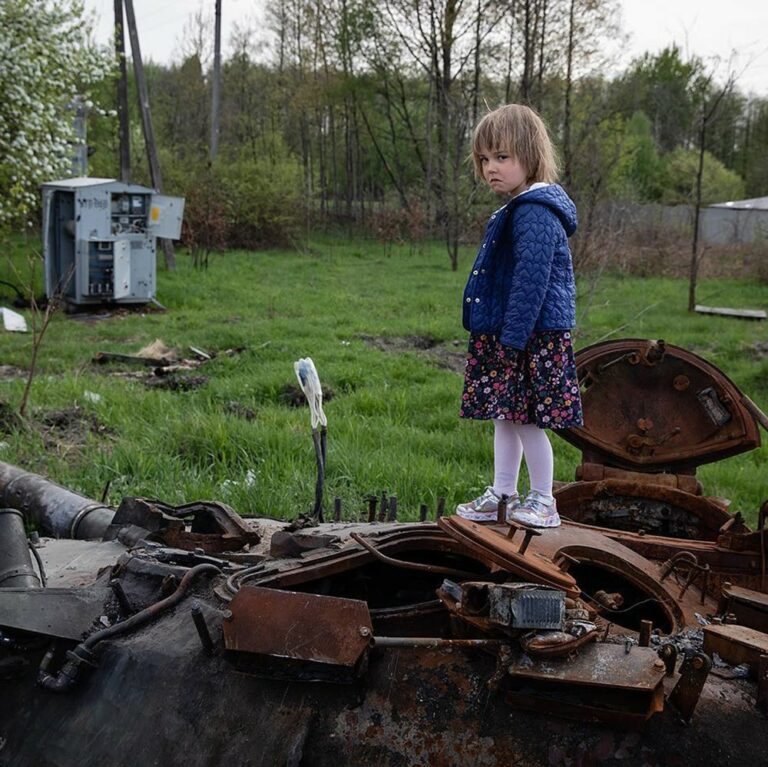According to the Office of the Prosecutor General, as of May 13, since the beginning of the full-scale war in Ukraine, 226 children have died and 420 have been injured to varying degrees. Most children were affected in Donetsk, Kyiv and Kharkiv oblasts. Fighting continues, and some settlements are under occupation, and as of April 26, the UN estimates that about 13 million civilians (including children) cannot leave dangerous places. So the number of casualties, unfortunately, will only increase, and the final number of victims is still being determined.
In one way or another, war hinders the full development of every child who is a citizen of a warring state. There are international instruments and agreements in the world according to which the participants in the war should strive to cause as little damage as possible to the civilian population. Russia systematically fails to comply with the Geneva Conventions and the Hague Conventions and Declarations, international law governing the protection of victims (including children) and methods of warfare.
In addition, Russian troops violate a number of basic rights of the child, as defined in the UN Convention of the same name. The list of basic rights includes a separate article 38 stating that the child has the right for protection during military conflicts. But, unfortunately, during the Russian invasion, children remain a particularly vulnerable group. Since the beginning of the full-scale war, the Voices of Children charity organization and the Kharkiv Institute for Social Research have been producing monthly reports on recorded crimes against Ukrainian children and a detailed analysis of violated articles in various documents.

Russians use forbidden methods and means of waging war against children
(Violated: Article 23 of the Hague Convention, Article 51 of the Additional Protocol to the Geneva Convention)

During the full-scale war, Russian troops repeatedly used forbidden weapons, including phosphorus bombs, cluster munitions and incendiary bombs. International law prohibits such weapons because they inflict additional suffering on people (deep wounds, tissue necrosis). However on April 4 occupants fired at the civilian infrastructure of Mykolayiv with cluster munitions therefore 9 adults and 1 child were killed. On March 30-31, the Russians used phosphorous munitions in Slobozhanshchyna, injuring 11 civilians, including four children. The Russian troops are also deliberately and regularly shelling residential areas, social infrastructure, and civilian livelihoods.
The Russians are creating an artificial famine and humanitarian shortage in the occupied settlements
(Violated: Article 55 of the Geneva Convention)

In the occupied territories, residents often suffer from hunger due to the deliberate actions of Russian troops. For example, in Kherson on April 11, the occupiers seized a warehouse with medicine, food supplies and baby formula. There have been systematic cases of Russians preventing delivery of humanitarian aid, obstructing residents during the siege, looting and destroying shops and food warehouses, and even taking food directly from locals. According to the United Nations, more than 1.5 million children left in the war zone may be at risk of food shortages.
Russians kill and torture children
(Violations: the right to life and protection from abuse, Articles 6 and 37 of the UN Convention on the Rights of the Child, Article 3 of the Geneva Convention and Article 77 of Protocol I to the Geneva Convention)

War deprives children of their inalienable right to life, survival and healthy development, as there is a constant threat to their lives and health in places of war or occupation. In addition to the risk of death or injury from munitions and mines, children may come under fire or fall into the rubble of destroyed homes. For example, on March 18, rescuers pulled the bodies of seven-year-old twins from the rubble of the Chernihiv dormitory. Also, despite all the bans, the Russian military is resorting to torturing civilians, including children. For example, the tortured and burned bodies of three people, one of which belongs to a child, were found in the Izium district of Slobozhanshchyna.
The Russians are shelling hospitals and creating infrastructural medical problems
(Violated: the right to health, Article 24 of the UN Convention on the Rights of the Child)
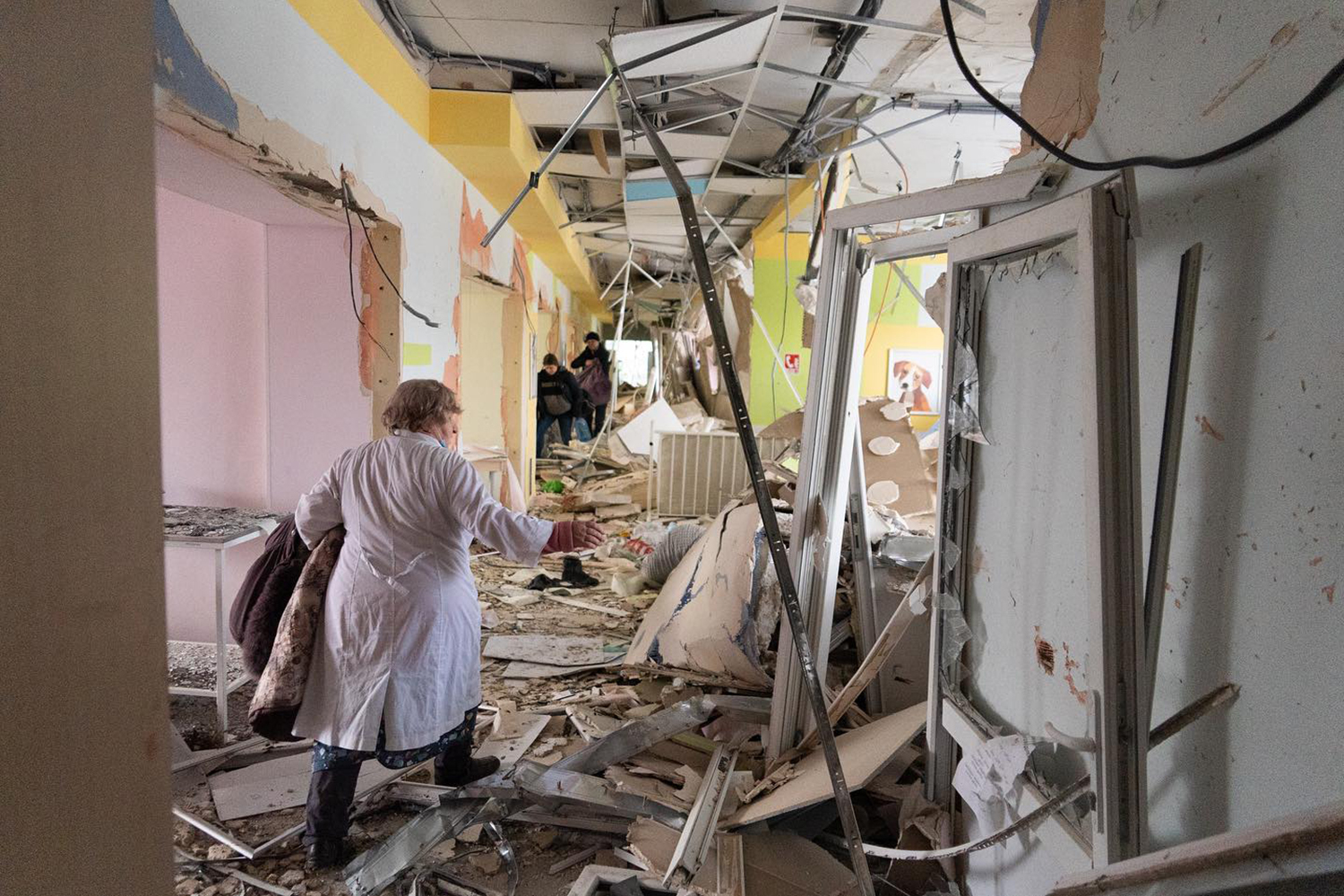
Photo: Mstyslav Chernov.
During the war, children were completely or partially deprived of the opportunity to use the services of the medical system. This problem exists both for children in the zone of occupation or hostilities, and for evacuees, or those who live in relatively “safe” parts of Ukraine. The reasons for this are different: first, the destruction of medical infrastructure (as of April 18, 139 medical facilities were shelled in Ukraine). Secondly, complicated access to medicine and difficulties in the supply of medicine, especially in the first weeks of the war. Third, medical personnel with an increased workload (due to a large number of wounded and the departure of colleagues) and difficult access to children due to hostilities cannot provide them with quality and timely medical services.
Because of labour in difficult conditions – in bomb shelters and medical facilities under fire – not only the condition of children and mothers has deteriorated, but also the infant mortality rate has increased. As for children who are forced to stay in poorly equipped bomb shelters for a long time, they do not always have access to adequate nutrition, drinking water and hygiene needs – and this also has a dramatic effect on health. In addition, the lack of sunlight in shelters can lead to the development of the so-called “Gollum syndrome” (paleness, stooping, passivity), claustrophobia and panic attacks in children.

Children from state-run care institutions need special attention. The main problems of their stay in the places of hostilities are the centralized provision of resources with supplies, as well as the arrangement of bomb shelters for the needs of children with disabilities.
Children who have managed to leave the war zone also often have problems with food and water (for example, in several-day lines at the border in the first days of the full-scale invasion), as well as access to medical services, including lengthy paperwork. after forced relocation).

Russians rape children
(Violated: right to protection from sexual violence, Article 34 of the UN Convention)
Countries parties to the Convention on the Rights of the Child, including the Russian Federation, have an obligation to protect children from all forms of sexual exploitation and abuse. However, after the liberation of the occupied towns and villages of Polissya, Sivershchyna and Slobozhanshchyna, it became known about mass cases of rape by the occupiers, including, unfortunately, children. For example, in the city of Bucha, the Russian occupiers raped an eleven-year-old boy and a fourteen-year-old girl. It is known about the case when the Russian military raped a baby by filming it – this was mentioned by President Volodymyr Zelensky in his address to Lithuania. In addition to the harm done to a child, this situation can also be classified as a crime involving the use of children in pornographic material. There are also cases of mental trauma due to the commission of sexual crimes in front of children, in particular when the victims of rape are children.
Russians involve teenagers in combat actions
(Violated: the right to protection from recruitment and participation in war, Article 38 of the UN Convention on the Rights of the Child, Article 77 of the Additional Protocol to the Geneva Convention)

During the second month of the war, the Russian military increasingly used Ukrainian children from the temporarily occupied territories for military purposes. In particular, children and adults are forced to disseminate propaganda materials via the Internet and obtain military information: the location of Ukrainian military equipment, weapons depots, checkpoints, etc. In addition, the occupation authorities of the so-called “LDNR” are mobilizing minors. It is known about the death of several graduates of the so-called “patriotic clubs of Novorossia” aged 16 and older, who performed combat missions of the Russian military. The Russian occupation authorities are also actively using Ukrainian children to create propaganda photos and videos.
Russians hinder Ukrainian children’s learning
(Violated: right to education, Article 28 of the UN Convention)
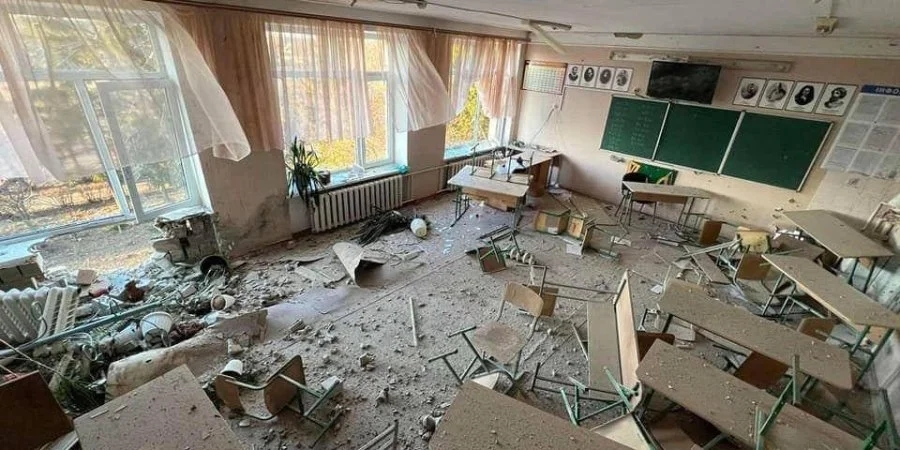
Photo: Olexiy Kuleba.
Education must be accessible and secure to meet the needs of the child, but war prevents this. First of all, because of the destroyed schools, kindergartens, other secondary and higher education institutions. As of April 21, 1,039 educational institutions were damaged and 99 were completely destroyed.
In an active war, learning is usually not a priority, as children and their parents work hard to survive. Survival takes up most of the time and changes a child’s routine, whether through shelling, air strikes, or hiding in shelters. However, there are problems with access to distance education for a number of reasons: lack of connection/service in the occupied territories, loss of property due to hostilities or looting by Russians. In addition, in the occupied settlements, Russians are forcibly changing their curricula to their own propaganda programs.
There are also problems with education in evacuation: in the case of forced relocation in Ukraine, it takes time to apply for admission to a particular educational institution, or material support for distance education. Abroad, these barriers are compounded by language barriers and possible general difficulties in adapting to new environments, differences in curricula, and more.
Russians are destroying the infrastructure for out-of-school development of children
(Violated: right to leisure and cultural development, Article 31 of the UN Convention on the Rights of the Child)
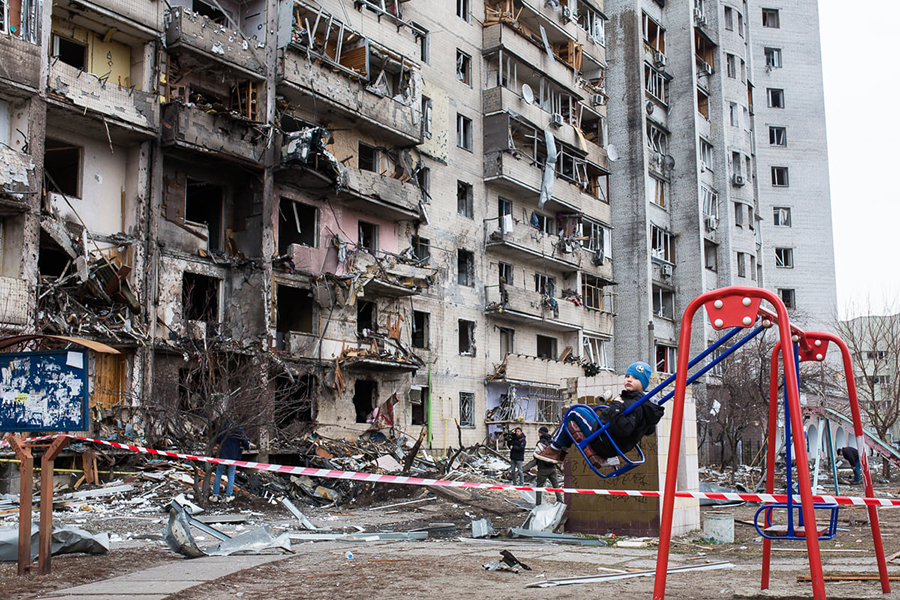
Photo: Volodymyr Petrov.
For all-round development, every child should have access to cultural and creative activities, leisure and recreation. Life in occupation or in the middle of combat actions do not usually involve leisure and cultural activities, but even in relatively safe or already liberated cities there are cases of destruction of cultural, sports and entertainment facilities. For example, in Kyiv on March 20, Russian troops fired on a shopping and entertainment center. In Ivankiv on February 27, the occupiers caused a fire in the local history museum. The case of the air strike on the drama theater in Mariupol is also world-famous. It is difficult for evacuated families to look for centers of familiar activities, recreation, and cultural and religious practices in the new environment.
Russians block evacuation and fire on evacuation vehicles with children
(Violated: Article 17 of the Geneva Convention)
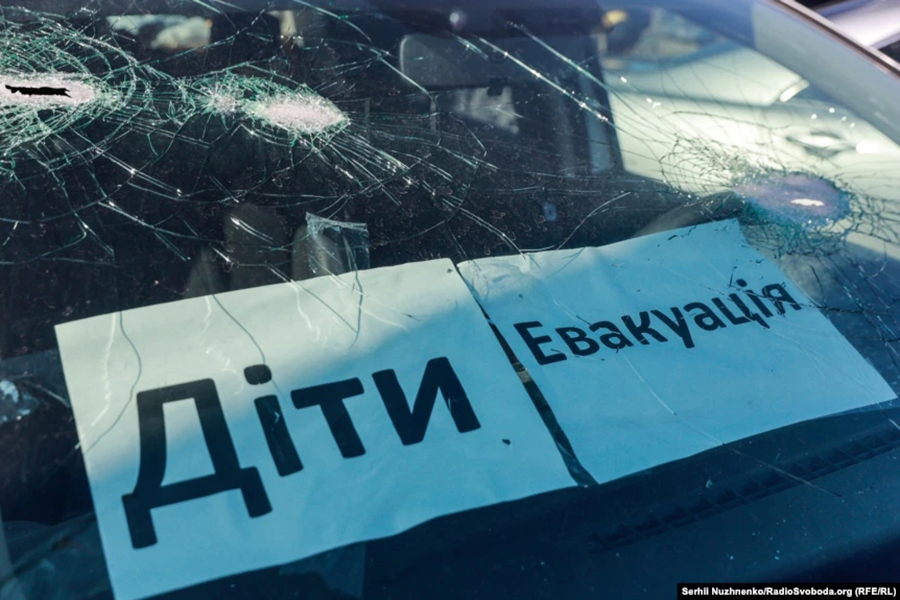
Photo: Sergiy Nuzhnenko.
The Russian Armed Forces are known for their systematic violations of evacuation agreements and green corridors. Numerous cases of fire at civilian cars have been recorded in two months. Also, for example, on April 8, 7 children died as a result of a rocket attack on the Kramatorsk railway station in the Donetsk region, where more than 4,000 people were waiting to be evacuated. The inscription on the Russian rocket “For Children” adds special cynicism to this story. Destroyed stations and roads make it difficult to get out of dangerous places. Sometimes people are prevented from even receiving information about the possibility of evacuation, because the Russians are blocking communication or deliberately misinforming people.
Even without taking into account the direct threat from the enemy army, evacuation poses many dangers: a child can get lost, abducted or physically unable to withstand long waits (often in the absence of food, water, light, hygiene) and the road. There are cases when children had to rely on evacuation only on their own: for example, eleven-year-old Hasan from Zaporizhia crossed the border checkpoint on the night of March 6 alone because his mother was forced to stay in Ukraine. In addition, there are risks of fraud, exploitation and trafficking in children at the border. For example, at the Porubne checkpoint in Bukovyna, border guards prevented two Chinese citizens from taking two undocumented infants out of Ukraine.
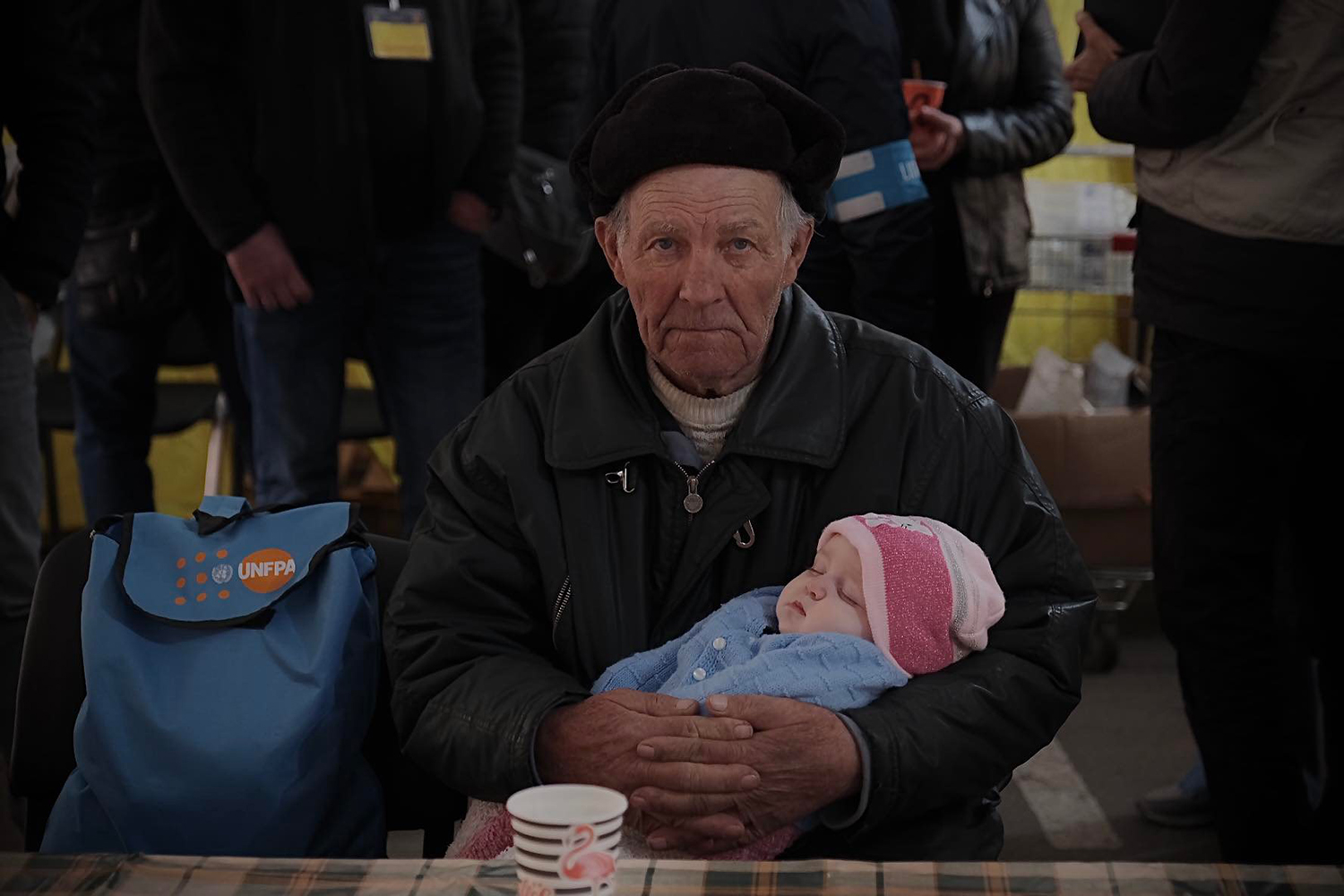
Photo: Pavlo Pashko.
According to UNICEF, as of April 21, a full-scale war had displaced more than 4.8 million Ukrainian children, more than 2 million of whom had gone abroad. All of them will face difficulties in adapting to a new place in one way or another. Fortunately, the problems of the first weeks after the invasion have diminished: people with children no longer have to stand in line at the border for several days without normal and regular access to food, water, hygiene and rest. Also, Ukrainians are now better studying assistance programs, opportunities to work and live abroad. Governments of many countries provide temporary shelters or incentives for their own citizens, provide medical care to Ukrainians, and organize educational, creative, and sports activities for children. The key issues now are the long-term acquisition of refugee status or temporary protection by adult guardians and difficulties in finding employment.
In the context of evacuation, another vulnerable category of children should also be mentioned: residents of institutional care facilities. Such children are cared for by the state, so their departure during combat actions depends on the coordination of leaders with military administrations, and on the ability to organize a safe evacuation or protection of children in the institution. As of April 25, more than 10,000 children from vulnerable categories have been evacuated (almost 6,900 of them abroad): orphans, children without parental care, children from foster and patron families, family-type orphanages, etc.
The right to physical and mental recovery
(Violated: Article 39 of the UN Convention)
Children, as one of the most vulnerable groups during the war, need not only physical but also mental recovery and social integration due to stress, psychological stress and often separation from family members. This is especially true of children who have been tortured, humiliated, exploited or abused.
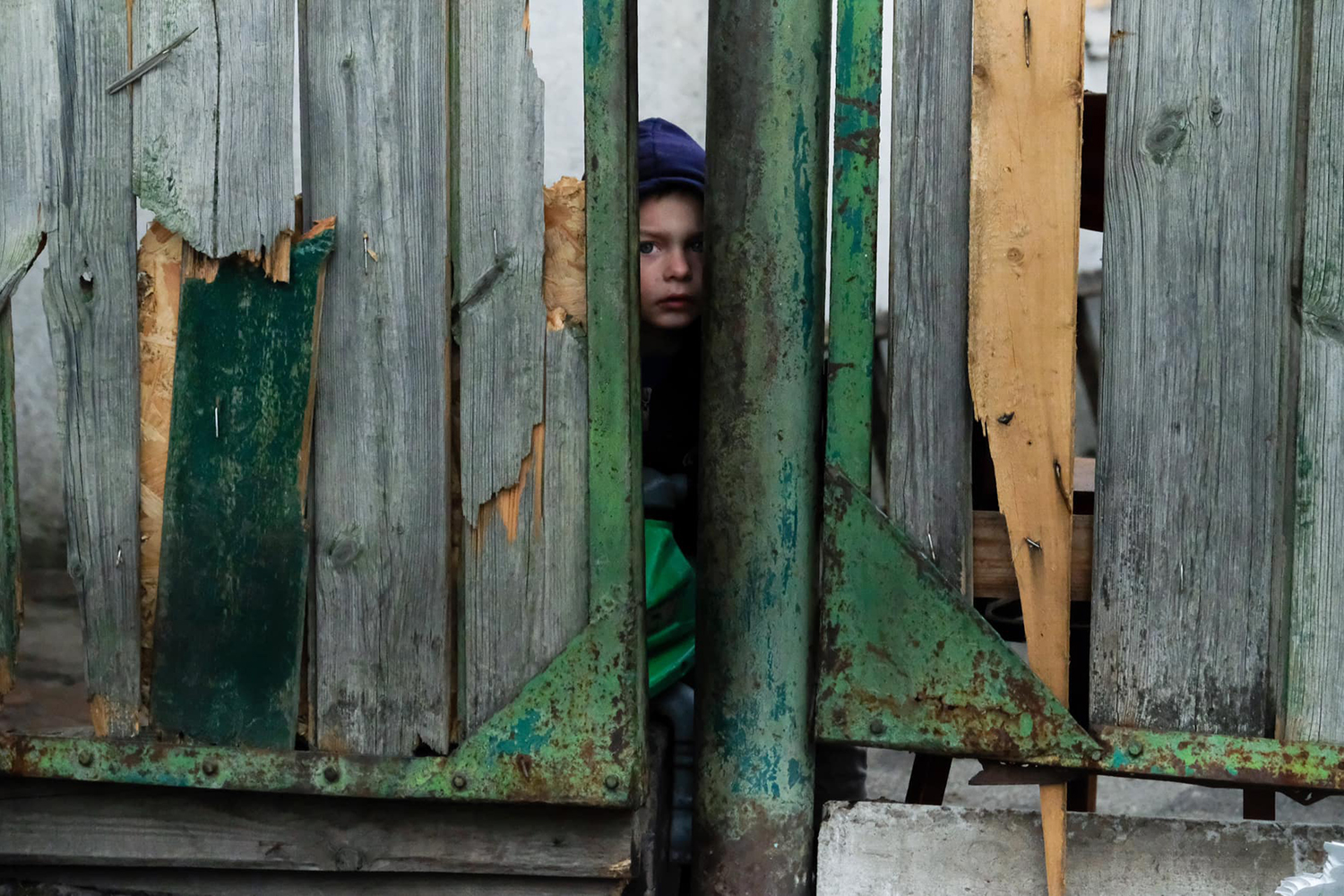
Photo: Karina Piliugina.
According to surveys conducted by the Kharkiv Institute for Social Research among evacuated families with children (most of them from Slobozhanshchyna and Sivershchyna), adults rate children’s psychoemotional status at an average of 5.1 out of 10. Adults notice changes in behavior and communication difficulties. The sociological company Gradus conducted a similar survey of children from the east, north and south of Ukraine. According to it, 33% of parents assess the psychological state of children as average. At the same time, 79% believe that the child’s psychological condition has deteriorated since the beginning of the full-scale war. 75% of children have signs of nervous disorder (mood swings, increased anxiety, poor sleep and appetite, impaired attention and memory, etc.).
Unfortunately, in places of occupation and active combat, it is impossible to provide comfortable conditions for the mental recovery of children and to provide systematic psychological support. Therefore, mental health problems can have long-term consequences, cause PTSD, depression and phobias due to traumatic events and may not manifest immediately.
Russians kidnap and forcibly remove children
(Violated: Article 49 of the Geneva Convention, Article 78 of the Additional Protocol to the Geneva Convention, Article 21 of the UN Convention on the Rights of the Child, Article 283 of the Family Code of Ukraine)

Darya Gerasymchuk, Ukraine’s presidential envoy for children’s rights and children’s rehabilitation, said that as of May 2, more than 180,000 Ukrainian children had already been deported to Russia and the so-called LDNR. In addition, before the full-scale invasion on February 24, Russian authorities prepared 280 cases for the illegal adoption of Ukrainian children – they had previously been deported from the occupied parts of Donetsk and Luhansk regions. This promises the illegal adoption of Ukrainian children by Russian citizens. Such a policy is aimed at the forced Russification and destruction of the Ukrainian identity of the child. Deportees are most often sent to remote and depressive regions of Russia; Ukrainian documents, personal belongings and means of communications are confiscated; instead – new documents are issued prohibiting them from leaving the region for two years. All this complicates the search and return of Ukrainian children.
Deportations often include orphans, children deprived of parental care, and children whose parents have died as a result of Russia’s military aggression. In addition to Russia, children are also taken to Belarus and the temporarily occupied territories. For example, in March, the Armed Forces of the Russian Federation under the pretext of evacuation forcibly removed from Mariupol to the temporarily occupied territory of the so-called DNR 12 minor patients of the Regional Children’s Bone and Tuberculosis Center. During the deportation, children are forced to pass through filtration camps, where they are often in unhealthy conditions. As of the end of April, at least 20,000 Ukrainians are being held in filtration camps on the Mangush-Nikolske-Yalta line (near Mariupol) and about 5-7,000 in Bezymennoye in the Donetsk region.

In addition to deportation to Russia and Belarus, there is a risk of human trafficking and kidnapping of children, whose fate is unknown. For example, on April 8, at the checkpoint in Vasylivka, the occupiers abducted the 16-year-old son of the Head of Zaporizhzhya Regional State Administration Oleh Buryak, who was traveling as part of an evacuation convoy.
How can the risk to children be reduced?
Specialists of the Voices of Children organization and the Kharkiv Institute for Social Research working with children suggest certain ways to solve the described problems.
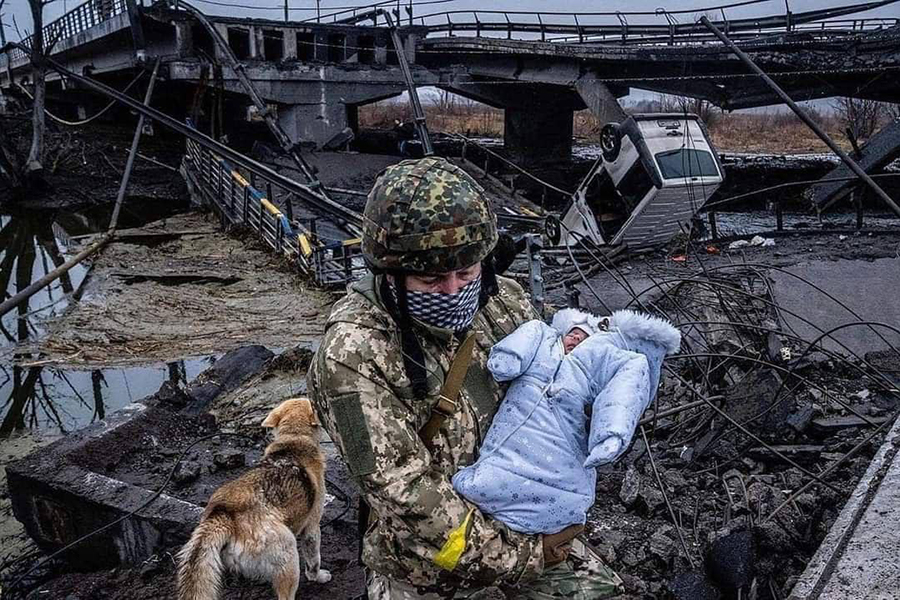
Photo: Timothy Fadek.
In order to reduce the threat to the life and health of children who are under occupation and / or in the territory of active combat actions it is necessary to strengthen the evacuation mechanisms of the state. First of all, in Donetsk, Luhansk, Kharkiv and Kherson regions. This is largely influenced by agreements on green corridors with Russia and its military at various levels. To protect in combat areas, parents need to explain to children the rules of conduct in shelters, in dangerous places, anywhere during an air alert. Care should also be taken not only to deliver humanitarian aid, but also to provide medical and psychological services. And of course, being safe, it is important to help fix the crimes of the Russian military.
At the moment, the most important thing during the evacuation is to promptly inform families with children about safe ways out and to facilitate it. Parents should be informed of mine hazards and safety precautions in critical situations so that the child is not lost or separated from them. For the same purpose, the contacts of parents and close relatives should be left on her belongings.
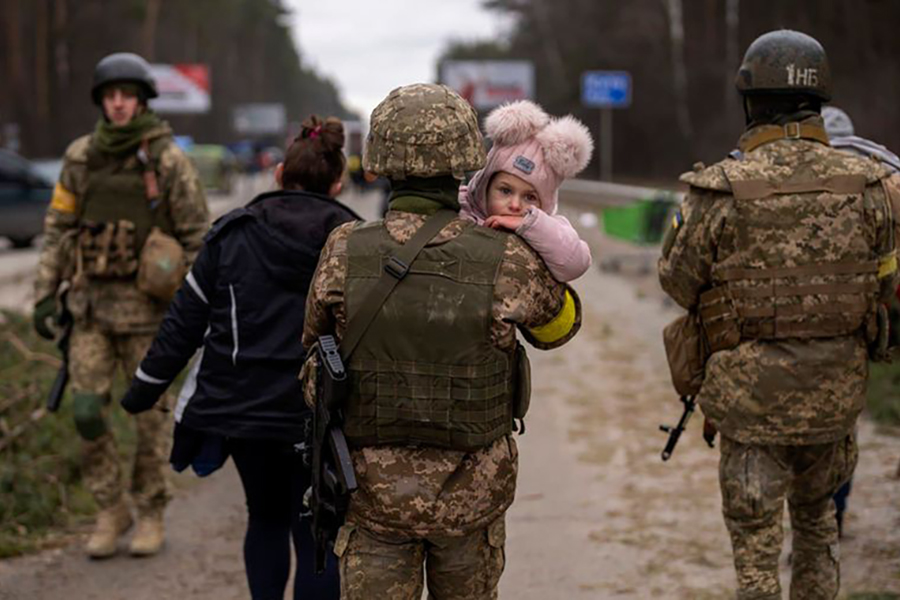
Photo: Emilio Morenatti for AP Photo.
For the safety of Ukrainians abroad, it is necessary to monitor the number of received temporary protection statuses. It is also worth promoting or directly creating educational opportunities abroad (in particular, using materials in Ukrainian). The local administration must officially notify permission or prohibition to return to the previously occupied territories.
It is important to hold awareness-raising on child kidnapping, exploitation and trafficking. But it is often very difficult to prevent deportations from the occupied territories on your own. Therefore, parents still need to be instructed on how to act and who to turn to in a foreign country to return home.
Institutional care facilities should first develop clear guidelines for their operation and evacuation during martial law and emergencies. It is worth establishing cooperation with children’s social protection bodies in relatively safe regions of Ukraine or abroad. It is important to organize and facilitate the evacuation of children to safe areas. At the same time, bomb shelters should be set up in facilities for the comfortable stay of children with disabilities and resources should be provided for all children.

